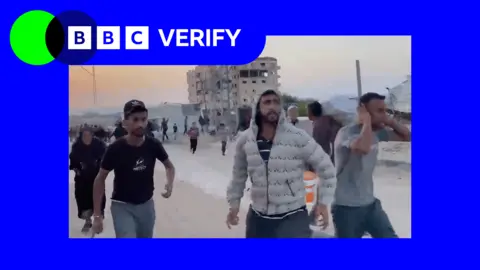The recent shift in the narrative surrounding the ongoing conflict in Gaza has been underscored by a significant revelation from the Israeli military. Following an investigation led by BBC Verify, the Israeli Defense Forces (IDF) have publicly acknowledged conducting a strike on the al-Mawasi area of southern Gaza. This incident has reportedly resulted in the death of at least one Palestinian and left 30 others injured, marking a critical moment in the communication surrounding military actions during this prolonged conflict.
This particular strike occurred on a Sunday, mere hours after a separate incident near an aid distribution centre in Rafah, where it has been documented that 31 Palestinians lost their lives, per the accounts of the Hamas-run Civil Defence agency. Such escalations have raised urgent questions regarding the proportionality and legality of military operations in densely populated civilian areas.
The BBC Verify’s diligent investigation revealed footage showcasing a different explosion in the city of Khan Younis, which had not been disclosed by the IDF through their regular operational updates. It was not until BBC Verify approached the military regarding this footage that the IDF admitted to an artillery strike, attributing the misfire to “technical and operational errors.”
In their explanation, the Israeli military claimed that their troops fired at what they thought was a legitimate target; however, the artillery rounds “deviated” and mistakenly impacted the civilian-populated area of Mawasi. Notably, they did not furnish any evidence to substantiate these claims. Historically, the IDF has seldom accepted responsibility for such “errors,” with BBC Verify analyzing statements from their official Telegram account and discovering only four prior instances in which the IDF acknowledged making a mistake regarding military operations since hostilities escalated in October 2023.
The aftermath of the strike has sparked widespread outrage, capturing harrowing scenes broadcasted via eyewitness footage, revealing bloodied bodies amidst clouds of dust. The distressing images showcased women and children fleeing in terror as the wounded were hurriedly carried away by ambulances, demonstrating the pervasive human cost of these military actions.
Further compounding the existing tragedy, the strike targeted an area inhabited by numerous displaced Palestinians. According to estimates from the UN, a staggering 90% of Gaza’s population—approximately 2.1 million—has been driven from their homes due to the ongoing violence. Following the strike, medical personnel quickly arrived to assist the injured, with reports confirming that one Palestinian was killed and 30 others sustained injuries, corroborating information from the Kuwaiti Field Hospital.
Initially, the footage was incorrectly associated with the tragic incidents at the aid distribution site in Rafah. However, with careful geolocation efforts by BBC Verify, the footage was correctly traced to Khan Younis, located approximately 4.5 kilometers away from the Rafah site. The Hamas-controlled Civil Defence agency, in light of these developments, reiterated that “Israeli gunfire” was responsible for the fatalities near the aid distribution site. While the Israeli military denied any engagement at that moment, a source later admitted to having fired warning shots in the area.
At the center of this evolving saga is the dispute over the accuracy of information disclosed by various parties involved, including the U.S. government, which has intertwined its narrative with that of the Israeli armed forces. The tensions escalated further when White House Press Secretary Karoline Leavitt made misleading claims regarding the BBC’s report linking the two incidents, prompting an official response from the BBC, which reiterated their commitment to journalistic integrity and clarified that they had not recanted any of their findings.
In the backdrop of this conflict, the humanitarian toll continues to rise alarmingly. Since the initiation of Israel’s military offensive prior to this strike, the number of reported casualties in Gaza has tragically surpassed 54,607, with the Gaza health ministry indicating that the conflict has taken a particularly severe toll since hostilities escalated on March 18. This staggering loss of life raises profound moral questions and necessitates urgent international discourse around the evolving dynamics of warfare, civilian safety, and the ethical responsibilities of military actors in conflict zones.
As this conflict continues, the need for transparent and accountable reporting, alongside genuine humanitarian efforts to protect the lives of vulnerable civilians, becomes increasingly critical. The shifting narratives surrounding the Israeli military actions highlight the complexities involved in disseminating accurate information amidst chaos and violence, reminding us of the fragility of truth in the context of war.



